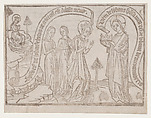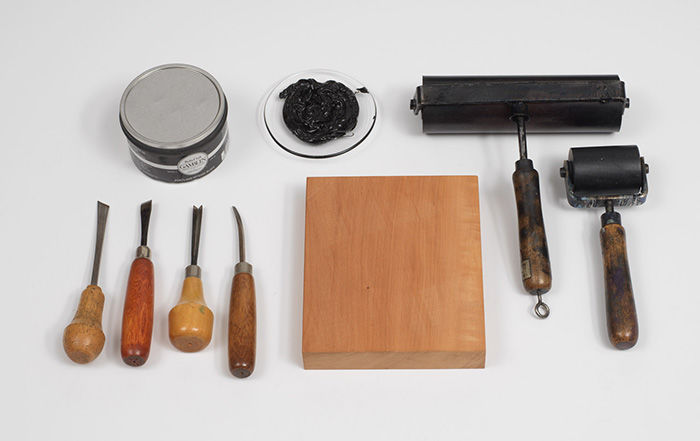The Bridegroom Offering a Crown to the Bride, from a "Canticum Canticorum" block book, second edition
Anonymous, Netherlandish, 15th century Netherlandish
Not on view
The Canticum Canticorum (Song of Songs) was produced in a Netherlandish block-book workshop beginning in the first half of the 1460s. The love poem traditionally believed to have been composed by Solomon was interpreted allegorically by Christians as a prefiguration of Christ's love for his bride, the Church, and, by extension, for the Virgin. The block book consists of sixteen pages with two scenes on each, in two registers, like the Apocalypse. This woodcut, from a later edition with new blocks that closely followed the originals, if somewhat crudely, is the last of the thirty-two. In the upper left the bride sits upon Lebanon; she reappears in the center with two attendants. Her banderole reads: 'His countenance is as Lebanon, excellent as the cedars. . . . This is my beloved' (Song of Solomon 5:15, 16). Christ, as the bridegroom, replies: 'Come . . . from Lebanon, my spouse . . . you will be crowned' (Song of Solomon 4:8). The last phrase is an addition alluding to the Coronation of the Virgin.
Due to rights restrictions, this image cannot be enlarged, viewed at full screen, or downloaded.


